
Darling Harbour is a harbour adjacent to the city centre of Sydney, New South Wales, Australia that is made up of a large recreational and pedestrian precinct that is situated on western outskirts of the Sydney central business district.
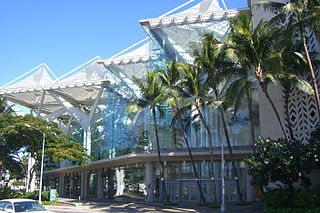
The Hawai‘i Convention Center is a convention and exhibition center in Hawaii, located in Honolulu on the island of Oahu. The Hawaii Convention Center is the largest exhibition center of its type in the state. It is located directly to the west of the Waikiki district of Honolulu.
The Melbourne Convention and Exhibition Centre (MCEC), colloquially referred to as Jeff's Shed, is a group of three adjacent buildings next to the Yarra River in South Wharf, an inner-city suburb of Melbourne, Victoria, Australia. The venues are owned and operated by the Melbourne Convention and Exhibition Trust.

The Pyrmont Bridge, a heritage-listed swing bridge across Cockle Bay, is located in Darling Harbour, part of Port Jackson, west of the central business district in the City of Sydney local government area of New South Wales, Australia. Opened in 1902, the bridge initially carried motor vehicle traffic via the Pyrmont Bridge Road between the central business district and Pyrmont. Since 1981 the bridge has carried pedestrian and bicycle traffic only, as motor vehicles were diverted to adjacent freeway overpasses. The bridge was added to the New South Wales State Heritage Register on 28 June 2002, the centenary of its opening.

Earls Court Exhibition Centre was a major international exhibition and events venue in London, England. At its peak it is said to have generated a £2 billion turnover for the economy. It replaced exhibition and entertainment grounds, originally opened in 1887, with an art moderne structure built between 1935 and 1937 by specialist American architect C. Howard Crane. With the active support of London mayor Boris Johnson, in an attempt to create Europe's "largest regeneration scheme", its proposed heritage listing was refused after it was acquired by developers, who promptly in 2008 applied for and were granted a Certificate of Immunity from Listing by English Heritage, and its demolition was completed in 2017.

Sydney Entertainment Centre, later known as Qantas Credit Union Arena, was a multi-purpose arena located in Haymarket, Sydney, Australia. It opened in May 1983, to replace Sydney Stadium, which had been demolished in 1970 to make way for the Eastern Suburbs railway line. The centre was owned by the Sydney Harbour Foreshore Authority, which administered the neighbouring Darling Harbour area, and managed under a lease.
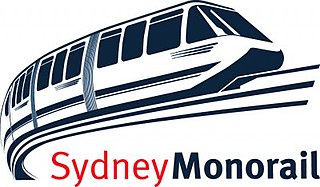
The Sydney Monorail was a single-loop monorail in Sydney, Australia, that connected Darling Harbour, Chinatown and the Sydney central business and shopping districts. It opened in July 1988 and closed in June 2013.
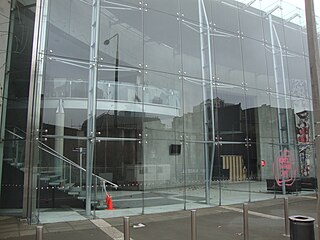
The Christchurch Convention Centre was New Zealand's only purpose-built convention centre, in Christchurch, the South Island's largest city. It was opened by the mayor of Christchurch, Vicki Buck, in November 1997, and was demolished in early 2012 following the 2011 Christchurch earthquake.
Andrew Andersons is an Australian architect. Buildings he has designed include various extensions to art museums, a number of theatres and concert halls as well as public, commercial and residential buildings.

Philip Sutton Cox is an Australian architect. Cox is the founding partner of Cox Architecture, one of the largest architectural practices in Australia.

Glebe Island was a major port facility in Sydney Harbour and, in association with the adjacent White Bay facility, was the primary receiving venue for imported cars and dry bulk goods in the region until 2008. It is surrounded by White, Johnstons, and Rozelle Bays. Whilst retaining its original title as an "island", it has long been infilled to the shoreline of the suburb of Rozelle and connected by the Glebe Island Bridge to Pyrmont.
Robert Raymond (Bob) Woodward was an Australian architect who gained widespread recognition for his innovative fountain designs.
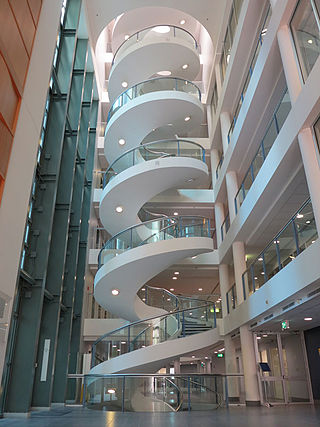
Kenneth Frank Charles Woolley, BArch, Hon DSc Arch Sydney LFRAIA, FTSE, was an Australian architect. In a career spanning 60 years, he is best known for his contributions to project housing with Pettit and Sevitt, four time Wilkinson Award-winning architect, including three times for his own house, the first being the 1962 Woolley House in Mosman, and his longstanding partnership with Sydney Ancher and Bryce Mortlock. He is regarded as being a prominent figure in the development of the Sydney School movement and Australian vernacular building.

Colin Arthur Still ARAIA, was an Australian architect from Watsons Bay, in Sydney, New South Wales. As part of his involvement with the Australian Institute of Architects he served as a Vice President and Chair of the Environment Committee. As a landscape artist he was a finalist in several Wynne Prize exhibitions at the Art Gallery of New South Wales.
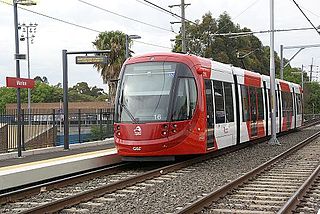
The Inner West Light Rail is a 12.8-kilometre (8.0 mi) light rail line in Sydney, New South Wales, Australia, running from Central railway station through the Inner West to Dulwich Hill and serving 23 stops. It is the original line of the Sydney light rail network, and was originally known as Sydney Light Rail. Light rail services on the line are now branded as the L1 Dulwich Hill Line.

The International Convention Centre Sydney is an exhibition and convention centre which opened in December 2016, in Sydney, Australia. ICC Sydney has over 70 meeting rooms, three theatres and two formal ballrooms.

The Overseas Passenger Terminal (OPT), known officially as the Sydney Cove Passenger Terminal, is a public passenger terminal servicing cruise ships and ocean liners located in Circular Quay, Sydney, Australia. Whilst commercial shipping operations on and around the site date from 1792, the current primary structure and waterfront promenade date from 1958, with subsequent on-going alterations and land reclamation throughout the latter part of the 20th century. The current design retains the black steel portal frame trusses of the original 1958 structure, with major additions completed in 1988 in the Post-War International Style through the collaboration of Sydney architects Lawrence Nield and Peter Tonkin.

Harbourside was a shopping centre in Darling Harbour, Sydney. Built in 1988 as part of the urban redevelopment of the Darling Harbour area during the 1980s, it was located in close proximity to other notable buildings such as the Sydney Convention and Exhibition Centre and the Australian National Maritime Museum. On 9 December 2022, the centre closed permanently preceding its demolition. The site will be redeveloped for a mixed-use tower and retail complex.

The Darling Harbour Woodward Water Feature is a heritage-listed water fountain located at Darling Harbour, Sydney, Australia. It was designed by Robert Woodward and built by Melocco Pty Ltd opening in 1988 as part of the redevelopment of the Darling Harbour precinct.
Michael Anthony Rayner is an Australian architect and urban designer. He was a director of Cox Rayner Architects for 33 years before commencing a new practice Blight Rayner Architecture in 2016. He has led the designs of many major Australian public buildings often with expressed structure. He is an adjunct professor at the University of Queensland and a Life Fellow and Past President of the Australian Institute of Architects in Queensland. He was appointed a Member of the Order of Australia in 2011. He was elected as a Fellow of the Australian Academy of Technology and Engineering in 2009.























